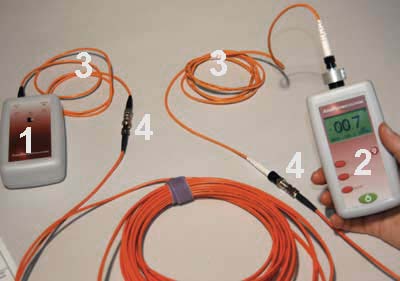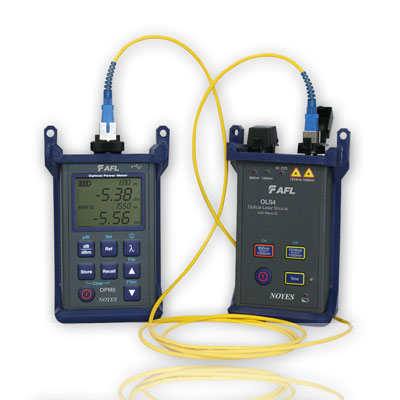Professionals use optical fibre testing equipment to maintain high-speed data transmission.
Professionals use optical fibre testing equipment to maintain high-speed data transmission.
Blog Article
Introducing the Trick Uses of Optical Fiber Examining for Efficient Data Transmission
In the realm of modern-day communication, optical fibre screening emerges as an essential practice for optimizing data transmission. Comprehending the complex applications of optical fibre screening invites a deeper expedition into its crucial role in forming the future of data communication.

Value of Optical Fiber Screening
The importance of optical fibre screening can not be overemphasized, as it functions as a vital part in guaranteeing the integrity and effectiveness of information transmission systems. In an era where high-speed communication is vital, any shortages in fibre optics can bring about significant data loss and lowered performance. Strenuous testing procedures are vital to validate the honesty and performance of optical cables.
Evaluating permits the recognition of defects such as micro-bends, macrobends, and splice losses that could hinder signal high quality. Furthermore, it provides understandings right into the total depletion and data transfer abilities of the fiber, making certain that the network satisfies certain functional criteria. Normal screening not only improves system performance however likewise prolongs the lifespan of the facilities by recognizing prospective problems before they intensify into costly failings.

Kinds Of Optical Fiber Examinations
Various sorts of optical fibre tests are conducted to make sure the efficiency and dependability of fibre optic networks. These tests can be categorized into several key types, each serving a details purpose in analyzing the integrity of the fiber.
First, Optical Time Domain Reflectometry (OTDR) is a famous test that recognizes mistakes, interlaces, and ports within the fibre. By sending out pulses of light and analyzing the mirrored signals, technicians can identify concerns along the fibre's length.
2nd, insertion loss tests evaluate the amount of signal loss when light travel through ports or splices, which is essential for maintaining network performance.
Third, return loss tests determine the amount of light reflected back in the direction of the resource, supplying understandings right into the high quality of links and potential sources of interference.
Additionally, continuity examinations ensure that the fibre course is total, permitting specialists to validate that the fibre is undamaged with no breaks. ofda.
Last but not least, visual mistake locators use noticeable light to identify breaks or severe bends in the fiber, aiding in fast troubleshooting. Collectively, these examinations create a comprehensive technique to preserving optimal performance in fibre optic networks.

Applications in Network Maintenance
In modern-day telecommunications, reliable network maintenance counts greatly on optical fibre testing to identify and fix concerns without delay. Regular screening makes certain that the network runs at optimal performance levels, reducing downtime and boosting individual experience.
Among the primary applications of optical fibre screening in maintenance is the discovery of faults, such as breaks, flexes, or view publisher site improper links. Methods like Optical Time Domain Reflectometry (OTDR) allow service technicians to locate these problems precisely and evaluate the quality of the fibre web link. Furthermore, loss testing confirms the stability of the optical course, making sure that signal depletion stays within appropriate restrictions.
Routine upkeep screening also helps in safety nets, determining possible problems prior to they rise right into considerable failings. This proactive method can save companies both time and funds. During upgrades or growths, optical fiber testing ensures that brand-new installations integrate flawlessly with existing facilities.
Enhancing Data Transmission Dependability
Reliable network maintenance with optical fibre testing not just addresses instant concerns yet also plays a considerable role in enhancing information transmission reliability. By identifying faults, measuring signal loss, and examining the general problem of Continued fiber optic wires, screening makes sure that potential troubles are corrected before they intensify into substantial interruptions.
Routine optical fiber screening, such as time-domain reflectometry (TDR) and optical time-domain reflectometry (OTDR), allows technicians to pinpoint the specific places of breaks, bends, or port concerns within the network. This aggressive strategy not only lessens downtime however additionally enhances the performance of information transmission by ensuring that the paths for signals are clear and working efficiently.
Additionally, testing help in validating adherence to industry standards and requirements, which is essential for keeping the stability of data flow. By guaranteeing that each link satisfies called for limits for loss and quality, organizations can bolster their confidence in the integrity of their information networks.
Inevitably, investing in detailed optical fiber screening not just improves information transmission reliability but additionally supports the lasting operational efficiency of interaction frameworks.
Future Patterns in Fiber Screening
Arising innovations are positioned to revolutionize fiber testing, paving the way for enhanced efficiency and precision in information transmission diagnostics (robotic vision). As the demand for faster net and greater data transfer proceeds to climb, the combination of sophisticated devices such as synthetic intelligence (AI) and artificial intelligence (ML) is set to transform traditional fibre testing methods. These technologies will enable predictive upkeep and automated mistake discovery, significantly decreasing downtime and enhancing network integrity
Furthermore, the fostering of Internet of Things (IoT) tools will certainly facilitate real-time tracking of fiber networks, enabling immediate identification of performance concerns. This shift in the direction of proactive monitoring will minimize disturbances and enhance data circulation.
Furthermore, innovations in optical time-domain reflectometry (OTDR) and brand-new testing standards will improve the accuracy of dimensions, guaranteeing that data integrity is maintained throughout the transmission process. The arrival of 5G innovation additionally demands the growth of a lot more innovative fibre testing techniques to sustain its high-speed demands.
Verdict
In verdict, optical fiber screening is necessary for keeping reliable information transmission within communication networks. By utilizing numerous testing methods, such as OTDR and insertion loss examinations, prospective faults can be recognized and rectified, thus boosting signal quality and reducing downtime. Normal testing not only guarantees conformity with industry requirements but additionally promotes proactive maintenance, ultimately adding to the long-term reliability and efficiency of fibre optic systems. The continued development of screening methods will other certainly additionally strengthen these capacities in the future.
Report this page